Text
guts and glory

People are often surprised to know that there is always at least two midwives (or a midwife and a birth assistant) present at an out-of-hospital birth. This is in case of an emergency, it’s helpful to have another pair of hands especially after the baby arrives, as there are then two people to take care of. I recently found a piece I wrote in 2016 when I was a student midwife and thought it would be fun to share. It’s about capability, instinct and also gratitude of my medical training and midwife colleague support.
7-7-16
I recently had two birth experiences within days of each other that were at once hair raising, empowering and humbling, to say the least. Both times I delivered and resuscitated a baby by myself: the first time with the appropriate medical equipment (i.e. a stethoscope and oxygen tank) at the birth center, and the second time just me at home with little more than pure instinct.
If I ever doubted my capability as a newer midwife, these exciting curve balls that the universe threw me reassured me that I can handle at least one of two urgent situations (newborn resuscitation and maternal hemorrhage) that you have to plan for and be able to manage during an out-of-hospital birth.
The first experience unfolded quite unexpectedly. Around 3 am on a Wednesday morning, an excited soon-to-be father’s voice greeted me on the phone to tell me his wife was in labor. He gave me a sense of what was happening and since it still sounded like early labor, I instructed the mother to hydrate and get in the shower to relax her body enough to try and get some rest in between the contractions
Close to 5 am, her husband called back to say the contractions had increased in frequency and in intensity. I encouraged them to head to the area of the birth center, as they lived an hour’s drive away. About 30 minutes later they called again to say they were on their way and I heard the mother more vocally coping with the contractions, signaling to me that her labor was getting more intense. Their original plan was to get a hotel near the birth center to labor in and then come to the birth center when she was more actively in labor. (The birth center can only admit women when they are in active labor, which is when they have been having contractions that are long {60-90 seconds}, strong, and close together {3-4 minutes apart} for at least an hour, and/or are at least 6 cm dilated). However, because this mother’s labor was seemingly intensifying, even though it had not been very long since she felt her first contraction (for most first time mothers labor can be 18-24 hours), I instead had them meet me at the birth center to evaluate her labor progress and get vital signs on her and her baby.
They arrived close to 7 am after sitting in morning weekday traffic for an hour and a half. When I saw them pull up in the parking lot, the mother didn’t appear too uncomfortable. In fact when she got out of the car, she moved with a hop in her step, claiming she desperately had to release her bladder after holding it in traffic for all that time. She waddled through the door, and her husband helped her walk to the birth room. The sun was starting to pour into the birth room through the sheer white curtains, giving the room a lovely magical glow of gold – warming it for what was to come.
I guided them to the bathroom and closed the door to allow for some privacy. I had just stepped out of the room when I heard a low, deep and loud grunting sound erupt from the mother in the bathroom. I walked back into the bathroom without knocking, and she was bearing down on the toilet. I kneeled down and got close to her face so that she could focus on me and instructed her to just breathe, not push so hard. I asked her husband if she felt the urge to push in the car. He responded that she was ‘fine’ in the car – moaning and breathing to get through the contractions as she had been doing at home. His wife looked up at me as another contraction was coming on. She said, “I can’t not push,” and then again let out a deep moan as her whole body contracted forward, moving her baby through her. As I reminded her to just blow and not push, I asked her to lean back on the toilet so I could have a look. Sure enough, I could see about an inch of the baby’s head sticking out.
I immediately told them that they were going to have their baby soon, but not on the toilet, so I asked her husband to move her to the bed a few short feet away. When the mother attempted to get up, she felt the weight of her baby’s head sitting in her vagina and very quickly sat back down, claiming she could not walk. So, her husband looped his arms under hers and carried/dragged her to the bed, leaving her silver Birkenstocks in place right where her feet had been in front of the toilet. When we found them there a few hours later, we laughed as we reflected on how fast everything happened after her shoes were slipped from her feet.
While her husband relocated the mother onto the bed, I dialed the number of the other midwife, asking her to come ASAP to assist me for the delivery. There are always two people present at the time of birth (a midwife and an RN, or two midwives in this case), but up until the time of complete dilation and the start of pushing, it’s normal for a midwife to manage a labor by herself. Since it was 7 am and this labor spontaneously and very quickly transitioned from early active labor to baby nearly born, there was no one at the birth center except me and it would take at least 20 minutes for someone to meet me.
Once the mother was on the bed with her pants all the way off, I could now see at least double the amount of head I saw moments ago. This meant she was very close to crowning, but the head was still gently retreating back into her canal in between contractions (as it does in navigating the pelvis). I looked at her and smiled, told her she was doing great and reminded her to just breathe. Her husband laughed in shock at how fast everything was happening. Having the mother focus on breathing not only helped buy me a couple more minutes to gather some materials for the birth, but also prevented her from tearing if she were to push as hard as she wanted.
I got out the Doppler (a hand-held ultrasound to listen to a baby’s heart beat) and immediately heard a heart rate of 80 bpm. After ruling out that this was not the mother’s heartbeat, I thought, “You have got to be kidding me.” A normal heart rate for babies is between 110-160 bpm. Anything above or below that range can be problematic. While it’s normal for babies’ heart rates to decelerate while sitting in the birth canal, when I listened for those few seconds before another contraction came, this baby’s heart rate did not increase. I then found myself preparing to not only deliver this baby by myself – which for the most part is manageable, but also preparing to resuscitate this baby on my own. I told the parents that their baby’s heart rate was low, which can also happen with fast births, but that meant the baby might need some stimulation and help breathing when he or she came out. The best thing they could do was talk to the baby and say his or her name, since babies respond to familiar voices (this also gave them a task to keep them from panicking while I worked on their baby).
As the baby’s head was crowning, I brought the resuscitation gear closer to the bed: a stethoscope, towels, heating pad, cutting board (hard surface to effectively resuscitate the baby on), oxygen tank and ventilation mask.
I snapped on my gloves and with the next contraction the head slid out and then the shoulders and body followed easily. My relief was short-lived, however: as I suspected, the baby’s body was limp, eyes closed, with no spontaneous breathing efforts. Because of the amazing design of birth, even when a baby is not breathing room air upon delivery, the baby still receives oxygen from the mother’s body via the umbilical cord. So while this baby girl was alive, her heart rate now above 100 bpm, she did not transition right away to using her lungs for the first time. The next couple of minutes of resuscitation felt like an eternity.
It was as if I had tunnel vision – all sights and sounds blurred and distant except this newborn baby and my own voice in my head talking myself through the steps of successful neonatal resuscitation. I felt my body immediately go into a mechanical mode, operating on a level of pure function without emotion or fear.
I dried her body with a warm towel, which in most cases is enough stimulation to inspire a baby’s first breath. With no immediate response, I switched out towels and placed her on the cutting board for a firm surface to effectively ventilate her on. In 30-second cycles, I alternated between “bagging” the baby (using a manual resuscitator or “Ambu bag” that is applied around the baby’s mouth, which when repeatedly squeezed, pushes gas into the lungs, causing them to inflate) and listened to the heart rate for a rising pulse (a task typically performed by two people so that no time is wasted).
I managed to look at the time of birth, so at about a minute and a half of age and no response even with corrective measures taken to ensure adequate ventilation, I remembered that I had not tried suctioning yet. A bulb syringe is at every delivery and is typically used to relieve secretions caught in the baby’s mouth and throat from the birth. Immediately after suctioning her mouth and nose, she coughed, grimaced and opened her eyes – it was like watching a car’s engine roar to life.
The three of us in unison cheered, “Yes!” as the baby let out her first cry. Her mother placed her on her chest, her father cut her umbilical cord and I closely monitored her vital signs as they quickly stabilized to a healthy and normal value.
The second midwife arrived around this time, which allowed me to step outside, take a breath and mentally recap what just happened.
In that moment of stress, I felt more exhilarated than traumatized, which, strangely, resembled how I felt after skydiving – invincible after conquering a fear while also humbled by the magnitude of what just took place.
More than anything, the feeling I had after this birth was not only that I can proudly deliver a baby by myself, but how grateful I was for the usual presence of a medical assistant at a birth (although at that point it would not have mattered if he or she were medically trained or not). Even though I had the required medical equipment to manage the situation, I was reminded of how valuable it is to have another pair of hands to keep time, write notes, retrieve other instruments, etc.
I walked away from that birth not imagining that a similarly precarious situation would arise again later that week.
The second experience was at home with a doula client having her third baby. Her labor went so quickly that I ended up delivering her baby before her midwife even arrived. More surprising was that the ‘universe’ would then test my neonatal resuscitation skills again. Except this time, the learning curve was steeper: not only was I without an assistant, I did not have any medical equipment either – not even a pair of gloves.
Within 20 minutes of my arrival to the mother’s house, my client began spontaneously pushing. The midwife was on her way but because I soon started to see the baby’s head emerging from the mother’s vagina, she definitely wasn’t going to make it in time. I had just enough time to wash my hands and ask the father for a fresh towel to catch their soon-to-be born baby. As I encouraged the mother to alternate between small pushes and blowing in order to gently ease her baby out, her husband and two other sons tiptoed into the bedroom. Their new baby boy was soon born in what was a beautiful, seamless and fast delivery. But because it was such a precipitous birth, his respiratory system was a little depressed and he needed some help initiating that first breath.
Here I was again, tunnel vision, hearing my own voice in my head talking through the steps of resuscitation. When the initial efforts of drying and stimulating him with a towel were not successful, I had no other option but to use my mouth to help inflate his lungs with air. Since I didn’t have a stethoscope to assess his heart rate or listen to his lungs for breath sounds, I only had to go off external signs that his body was positively responding to my actions. His 3-year-old and 5-year-old brothers, mother and father watched, waited and prayed for him as my own breath, full of life and oxygen, expired from my lips and passed through his. After a few more breaths and suctioning out some fluid from his mouth, his color got better and he let out that relieving first cry.
The midwife arrived shortly after the baby was stable and healthy and could not show enough gratitude that I was there for the birth. I, too, was grateful.
The take away from both of these births was not only do I now really understand the value of a birth assistant, but also that of the safety equipment and instruments midwives carry to births. While it felt amazing to base my actions purely on instinct and intuition, and to know that doing so worked, it also made me appreciate that Western medical tools when used judiciously are extremely instrumental (no pun intended!).
As a newer midwife, to experience such hairy situations this early on in my career has its challenges. But what this work also shows me is that somewhere deep down in my soul I am equipped with the wisdom that knows exactly how to handle such situations and that I am exactly where I am supposed to be in my journey in experiencing them. I feel grateful to trust and feel confident in my capability because I know I still have a lot left to learn!
#studentmidwife#midwifeintraining#midwiferymodelofcare#midwifery#childbirth#birth#birthing#naturalbirth#fastbirth#birthcenter#birthcenterbirth#homebirth
22 notes
·
View notes
Photo
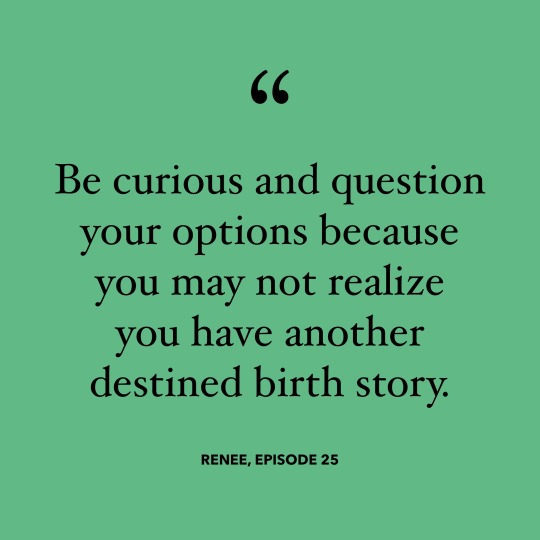
Late into Renee’s pregnancy, she took a tour of the labor and delivery unit at the hospital where she planned to give birth and went home crying. It was at that moment she had to listen to her intuition about where she was meant to give birth. Renee swiftly switched care to midwives and had her baby at a birth center a few weeks later. Informed choice and decision-making are key elements to not only the outcome and safety of your baby’s birth but to your experience overall.
#childbirthchoices#knowyouroptions#childbirth#pregnancy#pregnancypodcast#informedchoice#informedchildbirth#birthstories#birth#givingbirth#birthcenter#birthcenterbirth#homebirth#midwife#midwives#midwiferymodelofcare#mother#postpartum#birthstory#naturalbirth#waterbirth
7 notes
·
View notes
Photo
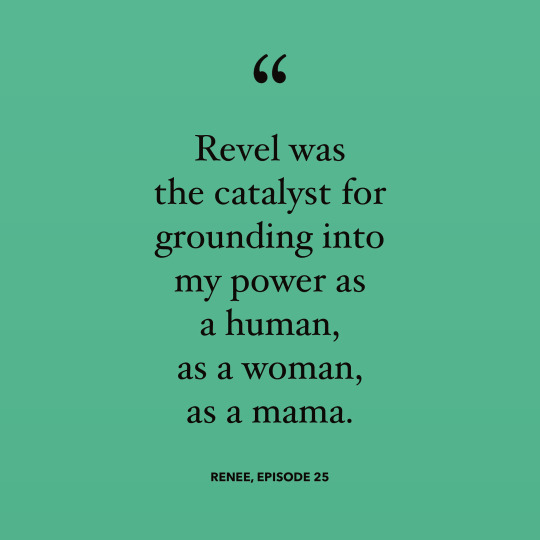
Having a child can be an opportunity for growth and expansion — on many levels.
#childbirth#birth#givingbirth#parenthood#newbaby#postpartum#pregnancy#pregnancypodcast#birthstories#midwife#midwiferycare#mother#childbirthchoices#birthcenter#birthcenterbirth#homebirth#doula#newparent
3 notes
·
View notes
Photo
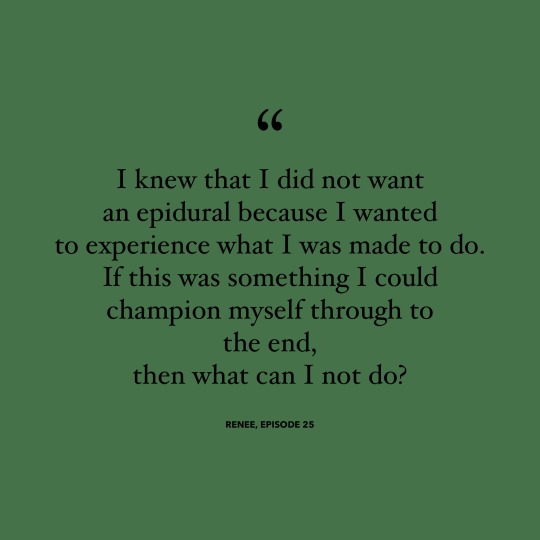
Convo with Renee on her birthing preferences as discussed on Milk Trails’ most recent episode.
#childbirthchoices#childbirth#birth#givingbirth#physiologicbirth#naturalbirth#homebirth#birthcenter#birthcenterbirth#doula#midwife#midwiferycare#pregnancy#birthstories
5 notes
·
View notes
Audio
As I prepare to welcome my second child into this world, this episode feels especially appropriate and a good one to temporarily sign off with. Renee Morrison, a mother to two beautiful children earth side, entrepreneur, and creator shares her birthing stories – one at a birth center and one at home. Get ready for a rich and inspiring 2-hour journey as we speak about birthing life, loss, grief, and gratitude and how all of it has informed the personal work Renee does within herself and thus the way she mothers and nurtures her children and family.
#pregnancy#pregnancypodcast#informedpregnancy#labor#birth#birthstories#waterbirth#birthcenter#homebirth#mother#miscarriage#pregnancyloss#postpartum#postpartumrecovery#midwife#midwiferycare#fourthtrimester#firstfortydays
4 notes
·
View notes
Photo
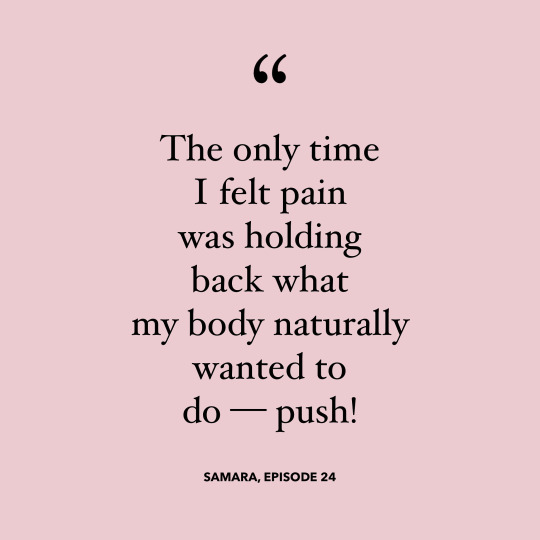
Sometimes one can feel the natural urge to push prior to complete dilation. One reason your care provider would encourage you not to push until the cervix is completely out of the way of the baby is the potential for cervical injury. While this is good reason, encouraging someone to essentially stop a freight train coming through their body is not so easy. It can take someone out of powerfully working with their body to painfully working against it. But with the proper physical and emotional support of knowledgeable birth workers and optimal laboring positions, homeopathy and hydrotherapy, it can be achieved. All this to say, assemble your labor and birth support team now — either virtual or in person — as it can be vital to your experience and outcome.
#pregnancy#pregnancypodcast#informedpregnancy#childbirth#childbirthchoices#birth#labor#midwife#midwiferycare#homebirth
5 notes
·
View notes
Photo

At the end of pregnancy, especially for non first time birthers, it’s normal to feel a lot of uterine activity and have some cervical dilation but not be in labor yet. This is both the best sign your body knows how to prepare and perform when it comes time and also maddening if it feels like the ‘engine is revving’ but doesn’t fully start when you want it to. 🌀 Try lots of baths, walking and meditation for your head space as well optimal fetal positioning exercises to help baby’s.
#pregnancy#informedpregnancy#childbirth#childbirthchoices#birth#labor#midwife#midwiferycare#homebirth#birthstories
2 notes
·
View notes
Photo

Wise words from a mother of 4…
#informedpregnancy#pregnancy#prenatalfitness#prenatalyoga#homebirth#midwife#childbirth#childbirthchoices#midwiferycare#pregnancypodcast#birthstories
7 notes
·
View notes
Audio
Samara is a 42-year-old mother of 4, yoga instructor and zumba teacher. She gave birth to all of her children at home with her youngest just 9 months ago. In addition to co-managed care with an OB-GYN and her midwife, Samara’s trust in her body’s strength, wisdom and capabilities trumped all concerns she heard around pregnancy over 35. However, like every birthing story, there’s a turn in ‘ the labyrinth’ one doesn’t expect and even for a seasoned mama, Samara ultimately had to do what every birthing person has to do — surrender to the journey.
#childbirth#birth#pregnancy#informedpregnancy#childbirthchoices#prenatalyoga#homebirth#midwife#pregnantover35#labor#birthstories#pregnancypodcast#birthstoriespodcast#motherof4
5 notes
·
View notes
Photo
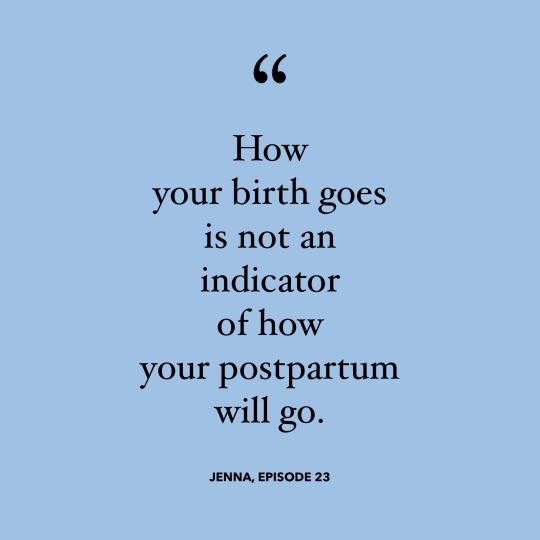
More wisdom from Jenna on #milktrails podcast, episode 23. The same truth goes for your pregnancy. There’s an unexpected hard spot somewhere along the journey of becoming a parent — for everyone. And as @brittabushnellphd once said, you just don’t get to choose when/where it shows up. For Jenna, it was pregnancy and again postpartum. Hear more at link in profile!
#childbirth#birthstories#postpartum#postpartumanxiety#postpartuminsomnia#birth#childbirthchoices#pregnancy#informedpregnancy#givingbirth#waterbirth#homebirth#birthcenter#midwife#doula#fourthtrimester#newborn#family
21 notes
·
View notes
Photo
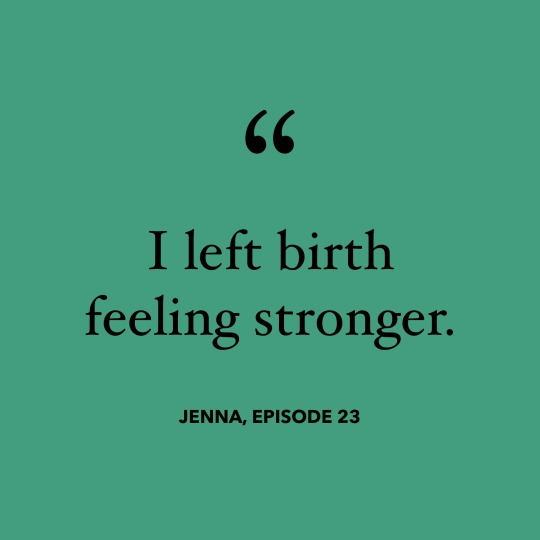
#childbirth#birth#pregnancy#informedpregnancy#childbirthchoices#mother#baby#newborn#family#waterbirth#birthcenter#midwife#doula#midiwferymodelofcare
1 note
·
View note
Photo
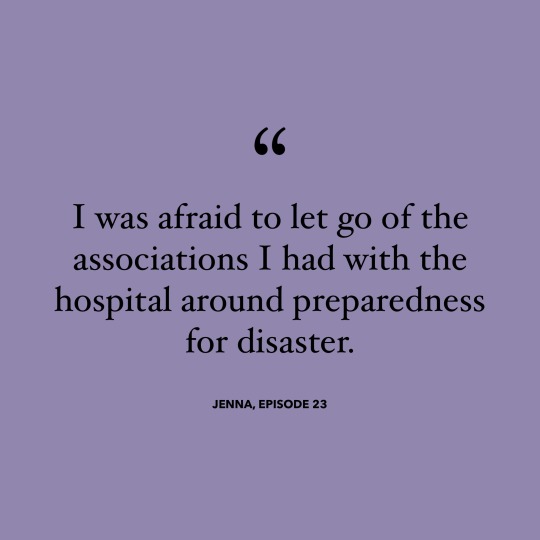
When your heart is wanting to give birth at home with midwives but your mind is afraid to let go of the norms of birthing in the hospital with doctors for the “just in case.” ▫️ Jenna shares her journey of choosing where to give birth and unpacking all the feelings around associations of safety and care within the medical system.
#childbirth#birth#givingbirth#pregnancy#informedpregnancy#childbirthchoices#midwife#midwiferycare#homebirth#birthcenter#mother#baby#newborn#postpartum#outofhospitalbirth#birthstories
1 note
·
View note
Link
In episode 23, I refer to an article that Jenna wrote while pregnant and the parallel experiences of pregnancy and a pandemic and what it’s like living through both. It’s such a wonderful, beautiful and poignant read! :)
1 note
·
View note
Photo

Pregnancy isn’t always what one imagines it to be…There can be feelings of gratitude and grief, growth and restriction, etc. ▫️ In #milktrails newest episode, Jenna talks about her experience of pregnancy and that once she was able to accept all of the emotions that came up, she was able to celebrate it more. 🙏🏽
#pregnancy#informedpregnancy#birthstories#birth#childbirth#newmother#mother#midwife#birthcenter#birthcenterbirth#waterbirth#pregnantduringapandemic
1 note
·
View note
Audio
NEW EPISODE: Jenna discusses the parallel experiences of pregnancy and a pandemic - and the feelings of living through both at the same time. She shares her journey of choosing her birthing team and eventually a birth center setting, her physiologic and fast birthing story and lastly the surprise of suffering from anxiety turned insomnia in the weeks and months after giving birth.
#birthstories#birth#givingbirth#birthcenter#birthcenterbirth#postpartum#postpartumanxiety#postpartuminsomnia#pregnancy#midwife#midiwferymodelofcare#midwives#doulas#doula#waterbirth#informedpregnancy#childbirthpreparation
0 notes
Photo
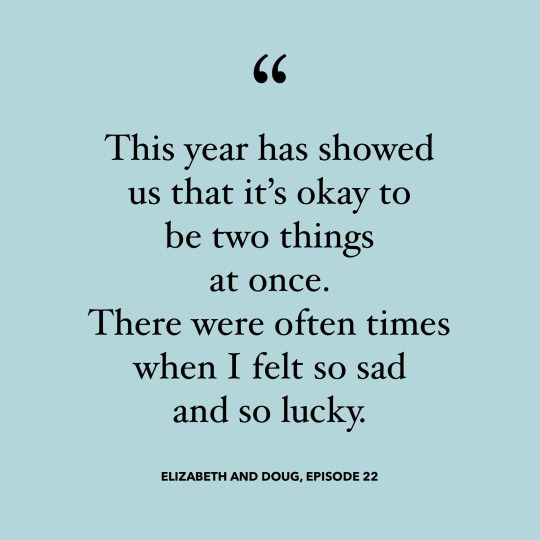
Yes! In the language of Britta Bushnell, PhD, it’s the power of “and” — grief AND gratitude. COVID (and parenthood, in general) has taught us to hold open the possibility of multiple truths instead of just one. 💎 Thank you @elizabethannjohn and @douglasjohn for sharing your wisdom on #milktrails podcast! 💎
#pregnancy#birth#givingbirth#pregnantduringapandemic#sharenormalbirthstories#midwiferymodelofcare#midwife#midwives#doulalife#doulas#waterbirth#homebirth#informedpregnancy
0 notes
Photo
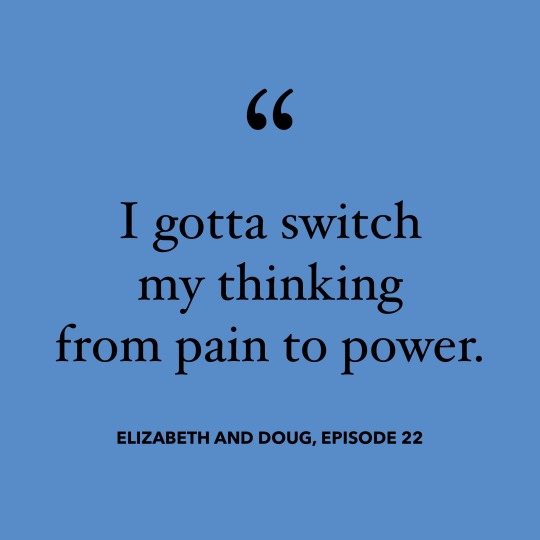
In the throes of labor when new heights of intensity are met, it’s helpful to switch up the mental dialogue to something positive and productive. 💪🏽 🔹 In recent #milktrails podcast, Elizabeth discusses the need to dig deep to find even more strength (much to her and her birthing team’s surprise) to birth baby number two at home. 🔹 Give it a listen! Link in profile.
#childbirth#birth#pregnancy#informedpregnancy#birthstories#postpartum#laborpain#laborpower#midwife#doula#waterbirth#homebirth#unmedicatedbirth#childbirthpreparation
4 notes
·
View notes